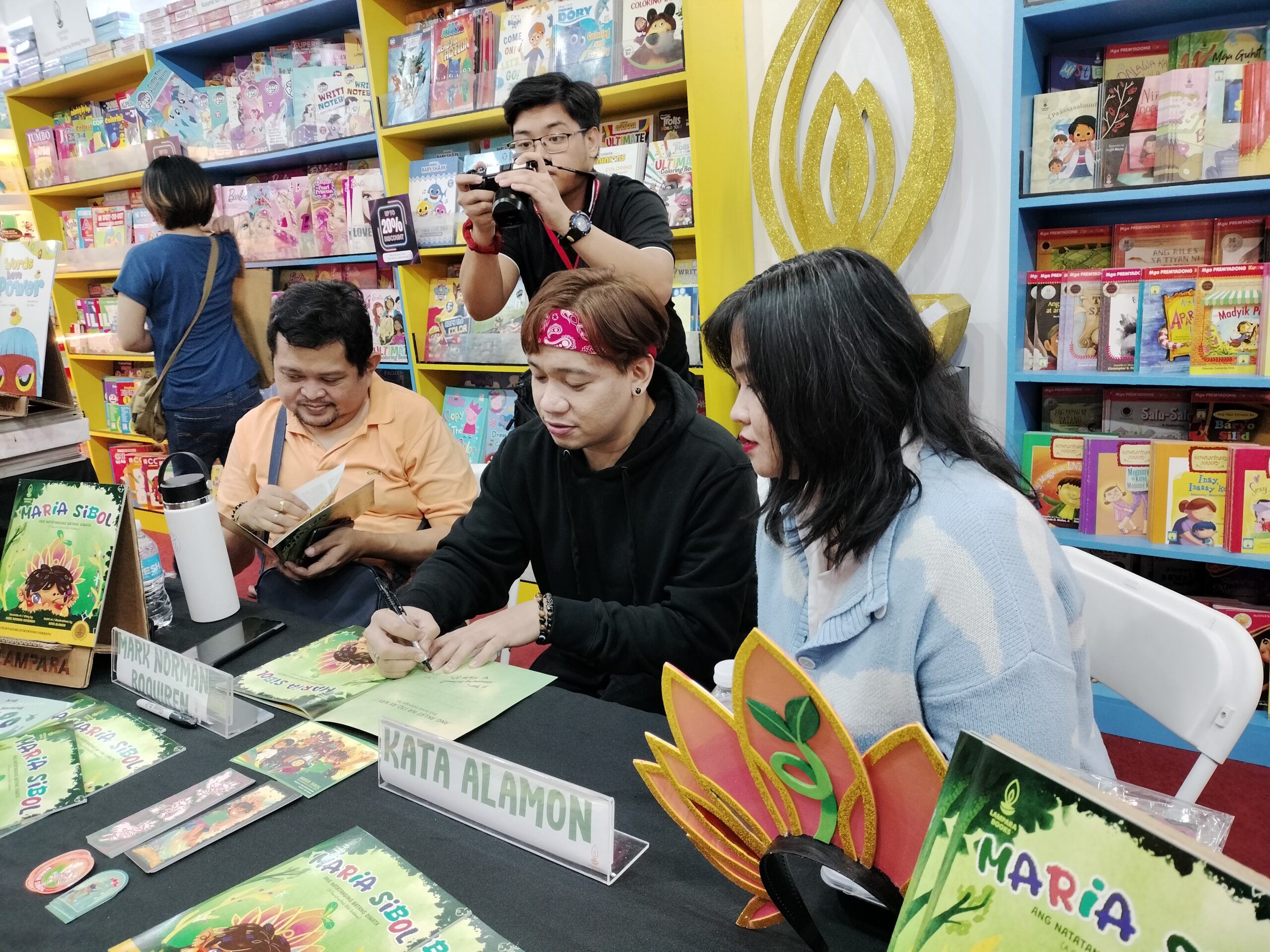“Maria Sibol” empowers children while deviating from the idea of the mythological Filipino diwata
With the conclusion of the recent Manila International Book Fair, readers are now indulging in their book hauls.
From the thousands of new titles and releases, one standout is a children’s book: “Maria Sibol.”
The storybook centers on the mischievous, young titular diwata instead of the adult, long-haired diwatas popularly depicted in Filipino culture, such as the myths of Maria Makiling, Maria Sinukuan, and Maria Cacao.
According to author Mark Norman Boquiren, the inspiration for “Maria Sibol” stemmed from wanting to write a modern folklore with a child at its forefront.
READ: All the ways to eat bread from Scratch, the neighborhood bakery and Makati’s new favorite hangout
“Bakit lahat [ng diwata] ay magaganda at dalaga? Bakit walang batang diwata? Unlike sa ibang cultures, s’atin ’yung bata, tiyanak lang eh. All of them are grown-ups. So do’n nagsimula,” Boquiren says.
More than putting a fresh twist on the Filipino diwata, Boquiren, who is currently taking up masters in malikhang pagsulat at the University of the Philippines, sought to empower children through the book.
“Isang kayang gawin ng bata na ‘di kayang gawin ng isang grown-up ay kaya nilang bumuo ng mundo sa isip nila. Do’n nagsisimula ’yung imagination, hiraya, at ’yung kanilang nililikha [na] kanilang pinahahalagahan,” he emphasizes.
“’Yun ’yung I think ’di dapat kakalimutan sa kuwentong pambata—to empower the child.” The main character’s name “Sibol” is a Filipino word that means “to sprout” or “grow” in English. It is usually used as a term for small growing plants, which parallels Maria Sibol as a small, growing child who has the ability to sprout creation through her imagination.
Illustrator Kata Alamon employed an art style that was colorful and bright to appeal to children.
“I did a very light Google search of diwatas, [at lagi silang] nakaputi, tapos with long, flowing hair. So I wanted to try and introduce something a little different, para mas cute siya and more interesting for the readers,” Alamon says.
To incorporate Maria Sibol’s name into the character design, Alamon placed a little green sprout on top of the young diwata’s head, just in front of her flower crown. And while Maria Sibol also has long hair like the other older diwatas, Alamon deviated from the usual white dresses and gave her vibrant clothing consisting of a top made out of bright green leaves, a shiny magenta belt, and purple shorts with Indigenous-like patterns.

‘Children’s books must have purpose’
When asked about his thoughts on Vice President Sara Duterte’s children’s book, “Isang Kaibigan,” which recently drew flak for its inconsistency and editing, Boquiren emphasizes that children’s books must always be written with a purpose.
“Huwag gamitin ang kuwentong pambata bilang propaganda,” the writer stresses. “Tatanungin mo talaga kung anong purpose, ba’t mo [isusulat ito]. Maganda sana kung humingi pa siya ng mga professional na advice para makabuo siya ng mas effective na kuwentong pambata.”
To be a good children’s book writer, Boquiren says that one must be a hardworking researcher, diligent in revising according to feedback, and ready to write and incorporate important sociopolitical issues.
“Kasi kahit kuwentong pambata siya, hindi natin maiaalis ang pangangailangang pampolitical—hindi government—’yung political na nangyayari sa buhay natin,” Boquiren says.
“Kahit sino kayang magsulat, kahit siya na nasa posisyon, kaya niya. Pero kailangan maging maingat tayo sa pagsusulat. At linawin ang goals o objectives [kung] bakit tayo nagsusulat.”
Published by Lampara Books, “Maria Sibol” was first written in 2019 when it won the 9th Lampara Books’ children’s story writing contest.
“Maria Sibol” is available on Shopee through the Precious Pages Bookstore.